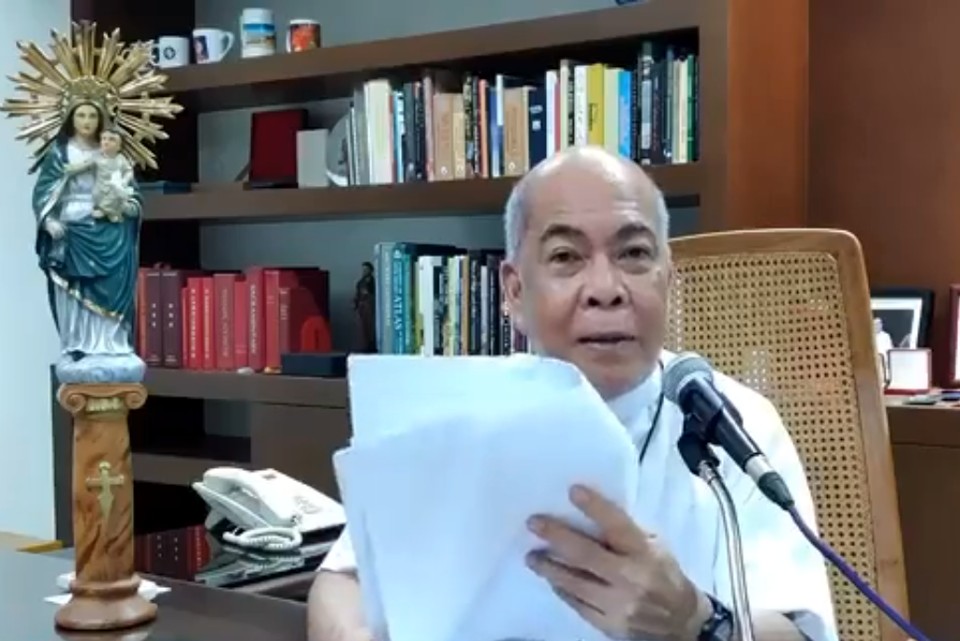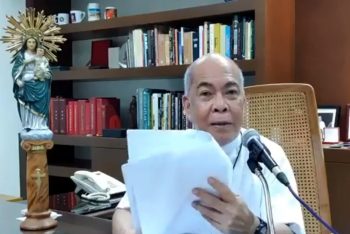
CBCP sets guidelines for liturgical services in times of ‘new normal’
 The Catholic Bishops’ Conference of the Philippines (CBCP) has set guidelines for the liturgical celebrations in these times that the country is experiencing the “new normal” brought by the Covid-19 pandemic.
The Catholic Bishops’ Conference of the Philippines (CBCP) has set guidelines for the liturgical celebrations in these times that the country is experiencing the “new normal” brought by the Covid-19 pandemic.
A 10-page guideline was drawn in the possibility of a gradual return to the new normal that the faithful will be allowed to attend physically the celebration of the sacraments especially the Holy Eucharist.
“We need the Lord – the Bread of Life – in the Holy Eucharist! The Holy Eucharist is central and essential to the life of the Church and to the life of each individual believer. It is in this context that we understand our people’s desire to return to the parishes, participate in the liturgy, and receive the Eucharist, which up to now we are not able to do because of the current restrictions to address the coronavirus pandemic,” according to the guidelines signed by Archbishop of Davao and CBCP President Romulo G. Valles.
Archbishop Valles said the official guidelines were proposed to all bishops as they make their own particular pastoral decisions and course of actions for their respective dioceses.
“During these days, we may hear of some guidelines from the government and health authorities regarding our conduct of worship. They may at first come across as impractical or without sense to us. In this scenario, I believe that the way forward is to patiently ask and seek clarification from the source of these guidelines,” he said, adding that it is good to remind themselves that these guidelines are meant not only for the Catholic Church but for all men and women and communities of faith who practice different modes of worship and prayer.
The guidelines include strict new measures on social distancing, using of face masks for the faithful, use of sanitizers, installation of foot baths in the church entrance, among others.
The elderly, sick, the young and the children are encouraged to stay home and not to attend masses as they are considered vulnerable to the infection brought by the virus.
Those who can attend the masses are encouraged to wear face masks, practice social distancing and the church pews should have markers to encourage the practice. The priest should not wear face mask provided that he will have a safe distance away from the congregation during the mass.
Communion should be received through the hands and no holding of hands during the singing of the Lord’s Prayer, as set in the guidelines.
Baptisms, Funerals, celebration of weddings should be done with immediate family members and important participants in attendance and no mass confirmation will be done within this year.
The guidelines also suggest having only one cantor to lead in the singing of the congregation, and also the reduction of choir members to promote social distancing.
The church facilities should be disinfected to prevent the spread of the virus.
“There will no doubt be challenges and frustrations. Our parishes need to learn new ways to cope with the “new normal” after the ECQ, when we begin to celebrate the liturgy, especially the Holy Eucharist, with the faithful in attendance. But we believe that following these guidelines is a reasonable sacrifice. For the interest of the common good, and ultimately to best serve our own community, we want to contribute to solve this crisis and soon be freed from the threat of the pandemic,” the archbishop ended. (John Frances C. Fuentes/DCHerald)


No Comments